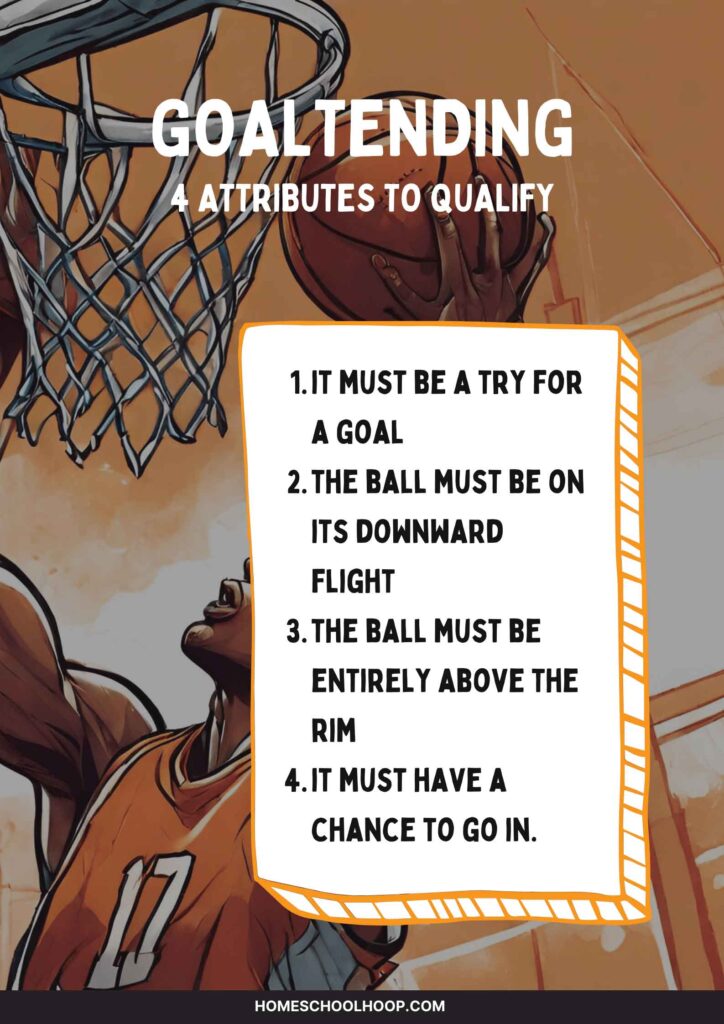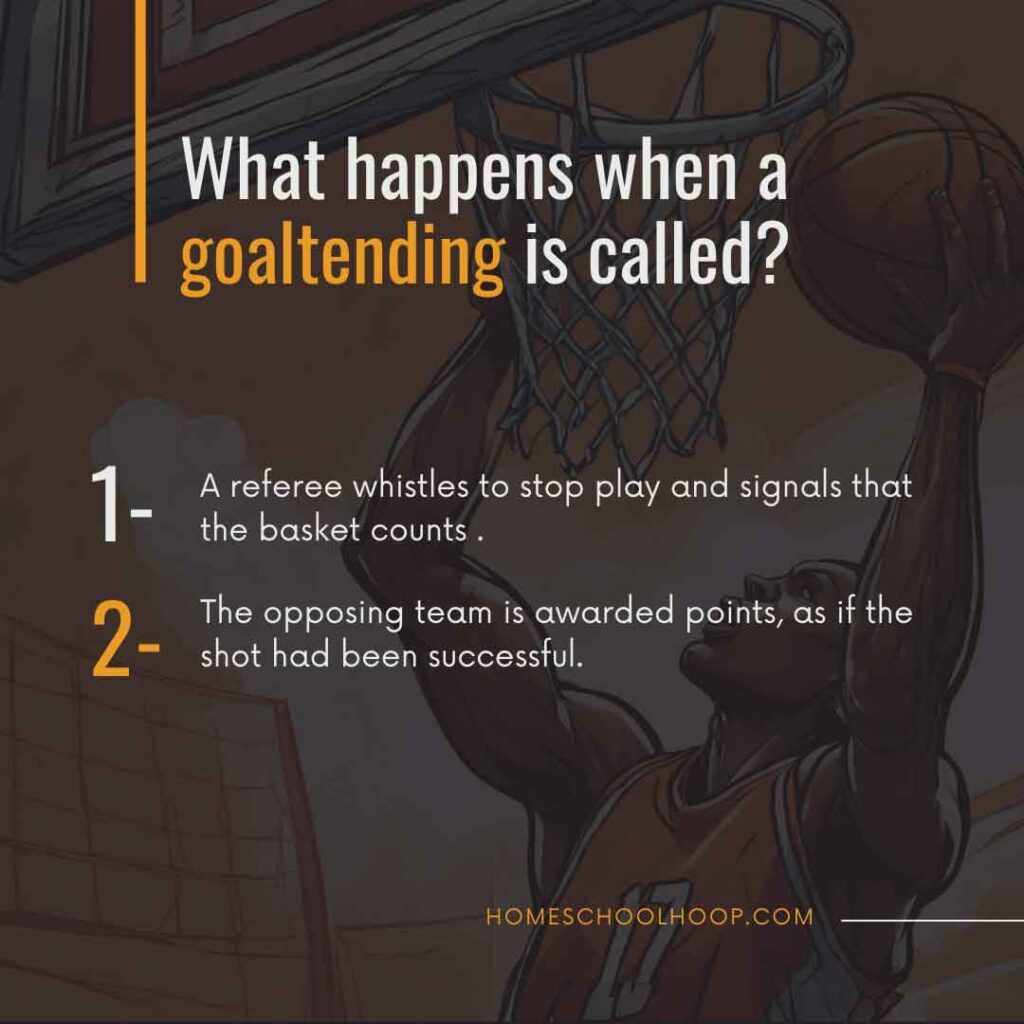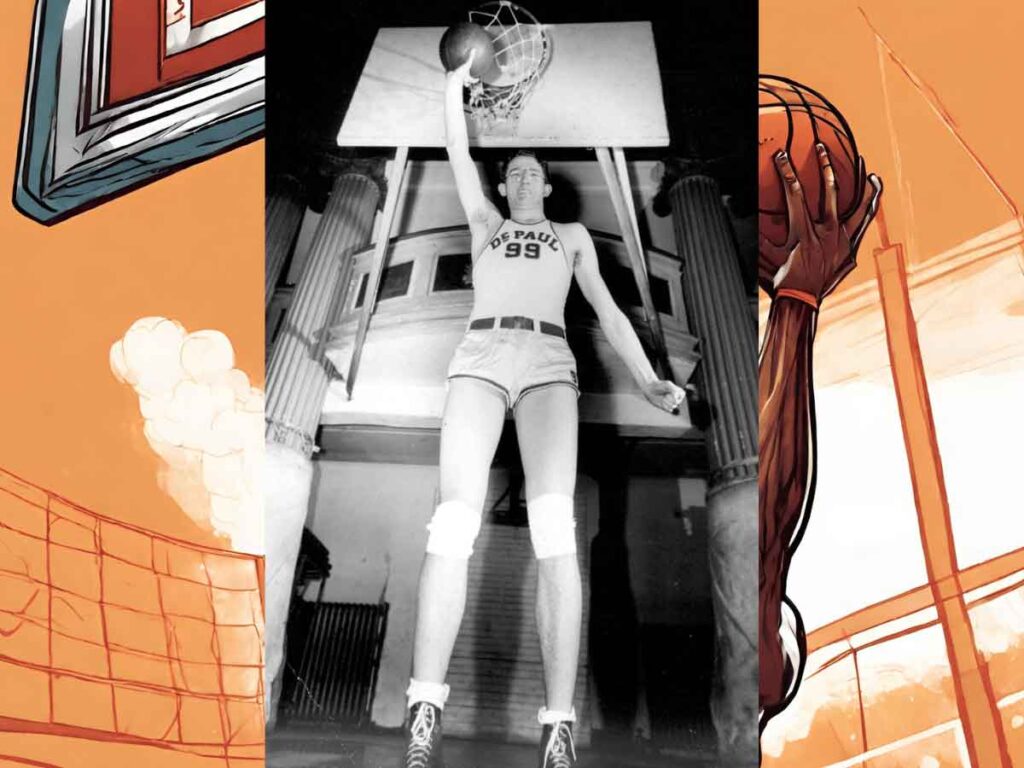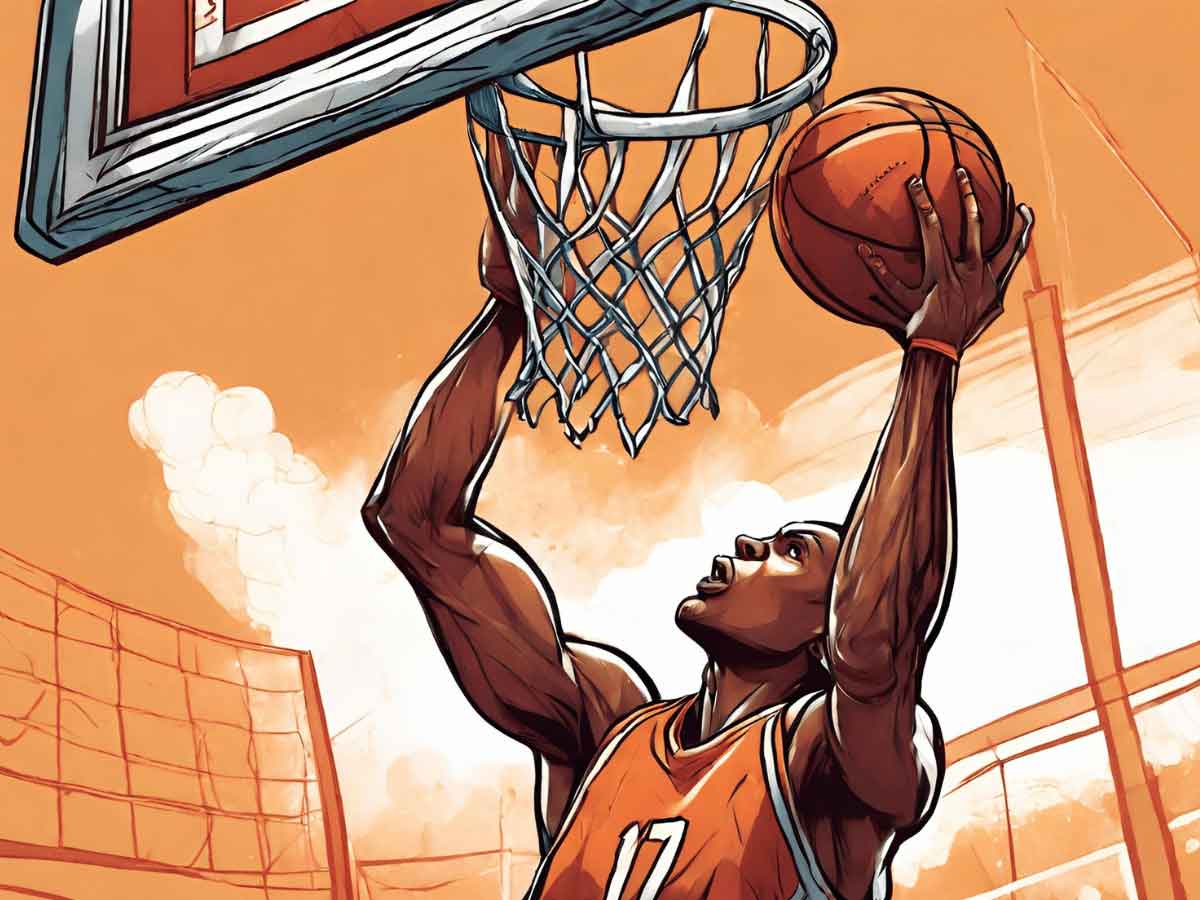Goaltending in basketball is a critically important role that dictates when a player can block an opponent’s shot. If it didn’t exist, tall players could easily stop every opponent’s shot by camping out under the basket.
Key Takeaways:
- Goaltending in basketball is a violation that happens when a player blocks a shot on its downward trajectory or when the ball is over the basket ring.
- The rule started in the NCAA in the mid-1940s as taller players started to jump high enough to reach above the rim.
- Goaltending is similar to, but not the same as basket interference.
Since its origins in 1944, goaltending has played a big role in how basketball defense is played. Here we dive into goaltending in basketball, exploring what it is, the rules across various leagues, how it impacts the game, and some of the most memorable (or controversial) goaltending moments.
What is Goaltending in Basketball?
Goaltending in basketball is a specific rule that decides whether a blocked shot is legal or not. If a player is called for goaltending, it means the way they blocked the shot was illegal. As a result, the basket counts.
In today’s rules, these four attributes must be met to qualify as goaltending:
- It must be a try for a goal: The offense must have taken a field goal attempt in a legitimate attempt to score. A pass, even an alley-oop pass, can’t lead to a goaltending call.
- The ball must be on its downward flight: The ball must be moving downward toward the basket when touched.
- The ball must be entirely above the basket ring: When touched, the ball needs to be above ring level.
- It must have a chance to go in: The ball must have a possibility of entering the basket for the block to be considered goaltending.

In simpler terms, if a player blocks a shot while it’s falling toward the basket and it looks like it could go in, it’s goaltending.
Remember the 1982 NCAA Men’s Championship game? A young, 7-foot Patrick Ewing racked up five goaltending violations in the opening minutes, giving Michael Jordan’s North Carolina squad 10 points.
Learn more: How tall is a basketball hoop?
Offensive vs. Defensive Goaltending
Goaltending can occur on both the offensive and defensive end, but offensive goaltending is very rare. This is because it’s unusual to have all four goaltending attributes met by an offensive player.
If the violation occurs by the defense, the offended team is awarded points (two points if the shot was taken from the two-point zone and three points if taken from the three-point zone).
If it happens on offense, on a team’s own basket, no points are scored and the ball is given to the opposing team at the out-of-bounds near the spot of the violation.

Rules in Different Leagues: NBA, WNBA, NCAA, and International Play
Goaltending rules vary slightly depending on the basketball league.
NBA and WNBA:
- In both the NBA and WNBA, a shot that has touched the backboard and is then blocked is considered goaltending, regardless of whether the ball is still traveling upward. This is most often seen in layup attempts.
NCAA:
- In NCAA basketball, goaltending during a free throw results in one point for the shooting team and a technical foul against the player who committed the violation.
- For NCAA men’s basketball, a block is goaltending if the ball is on a downward flight toward the rim or if any part of it is in the imaginary cylinder above the rim.
- In NCAA women’s basketball, the entire ball must be above the rim level (at least 10 feet off the ground) for it to be goaltending. In the men’s game, it’s enough if just the top of the ball reaches this height.
International Play (FIBA):
- In FIBA competitions, a defender is allowed to legally block a shot when the ball is over the rim but still on its upward flight.
High School:
- Similar to NCAA rules, goaltending during a free throw gives the shooting team an automatic one point. Plus, a technical foul is given to the player who goaltended.
Goaltending vs. Basket Interference
Goaltending and basket interference are two rules in basketball that are often mixed up. Both involve illegal blocking attempts and result in the shooting team being awarded points if committed by the defending team.
| GOALTENDING | BASKET INTERFERENCE |
| When a player touches a ball that’s already in a downward flight toward the basket and completely above the level of the rim. | When a player touches the ball or any part of the basket (rim, net, backboard) while the ball is on the rim or within an imaginary cylinder projecting above the rim. Reaching through the basket to touch the ball is also basket interference, regardless of where the ball is. |
| Is about the ball’s trajectory and position relative to the rim when blocked. | Is about illegal contact with the ball or basket when it’s around the rim’s cylinder. |
Dunking is an exception in basket interference. A player can touch the ball in the cylinder during a dunk without it being a violation.
As you can see, these violations are very similar so it’s easy to get confused. Even the NBA rule book and WNBA rule book combine the two under “Basket Interference-Goaltending.” The NBA uses goaltending to describe both goaltending and basket interference violations, as you can see in this compilation video below.
Learn more: How many WNBA dunks have there been?
The Impact of Goaltending on the Game
Goaltending doesn’t happen all that often in basketball games. But when it does, it affects the game in several ways.
Scoring and Points:
- When a defensive player commits goaltending in basketball, the shooting team is awarded the points as if the shot had been successful.
- This directly influences the game’s score, impacting the eventual outcome.
Momentum Shifts:
- A goaltending call can shift the game’s momentum. For example, a team on the verge of a comeback might gain additional motivation from a goaltending call in their favor.
Even when goaltending violations don’t happen, the rule still adds strategic depth and influences the game in various ways.
Strategy Impact:
- Defenders have to adjust their body positioning and carefully time their blocks to avoid committing the violation.
- Offensive players can adjust the timing and arch of their shots so they go up when defenders are in a position where they’re unable to block their shots legally.
History of Goaltending Rule
The goaltending rule was first introduced in 1944 in the NCAA. It was a response to the arrival of college players like George Mikan, who were tall and athletic enough to easily block shots at the rim. Before that, players couldn’t get up high enough to goaltend.

The NBA adopted the defensive goaltending rule early in its history. But when big and dominating players like Bill Russell and Wilt Chamberlain came into the league, the NBA expanded the rule to ban offensive goaltending in 1956. No players could touch the ball if any part of it was over the cylinder.
Today, goaltending and basket interference rules are in place at the professional, college, and high school levels.
Learn more: Who has the most rings in the NBA?
Controversies and Challenges in Goaltending Calls
When goaltending calls do happen, they often stir up controversy. They can be challenging for officials to accurately call because of the high speed of the game. Judging whether the ball is on a downward trajectory and above the rim requires quick and precise observation.
Video replay that’s available today helps referees make more accurate violation decisions by reviewing the play in slow motion. However, not all calls are reviewed.
In one controversial no-call, referees missed a goaltending violation in the final minute of a close battle between the Portland Trail Blazers and Utah Jazz in 2020.
In the early minutes of a game between the Los Angeles Lakers and Dallas Mavericks, LeBron James elevated so high for a block that the referees called it goaltending.
FAQs
Why is goaltending illegal?
Goaltending is illegal because it gives an unfair advantage to the defense. The rule ensures all players have a fair chance to score.
What is the difference between goaltending and blocking?
Goaltending is illegally blocking a shot on its downward flight toward the basket or when it’s above the rim. Regular blocking is legally stopping the ball before it starts descending or when it’s not directly above the rim.
What does goaltending do in basketball?
When a player commits goaltending, it directly affects scoring. The opposing team gets the points as if the shot had been made.
Can offense be called for goaltending?
Yes, the offensive team can commit goaltending, but it’s rare. Most often the offense commits basket interference, which happens if they touch the ball above the rim or alter the rim to affect the shot.
What happens if you goaltend a 3-pointer?
If a 3-pointer is goaltended by the defense, the shooting team is awarded three points, just as if the shot had gone in.
What is the penalty for goaltending in basketball?
The penalty for goaltending is that the shot is counted as made. The opposing team receives the points for the shot attempt, whether it’s a 2-pointer or a 3-pointer.


